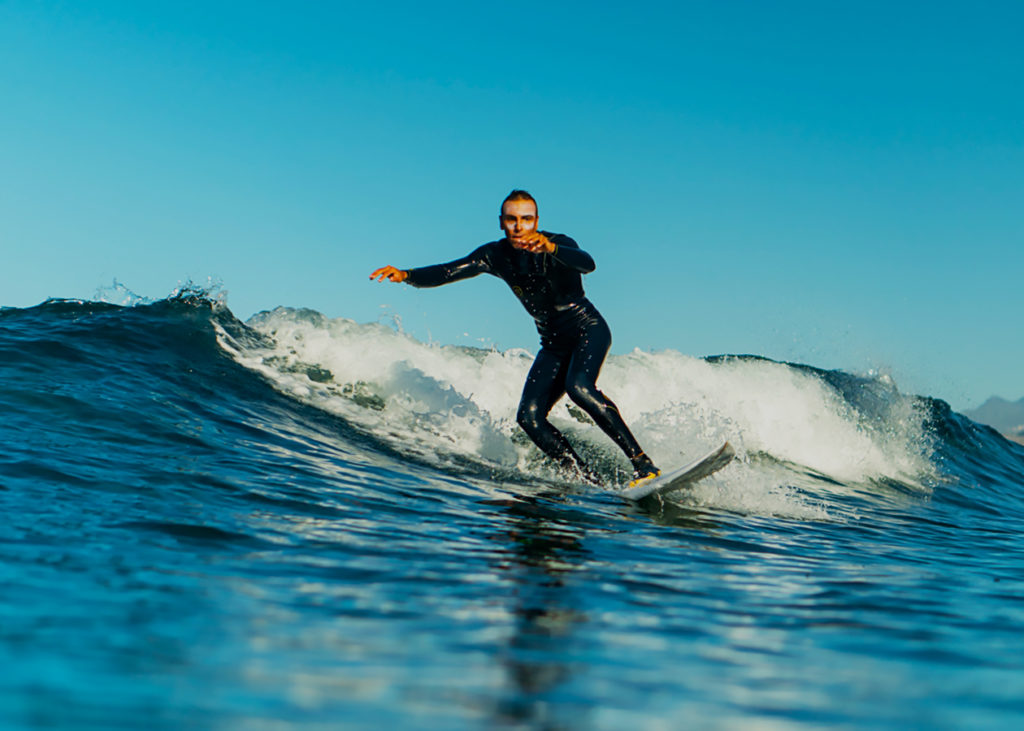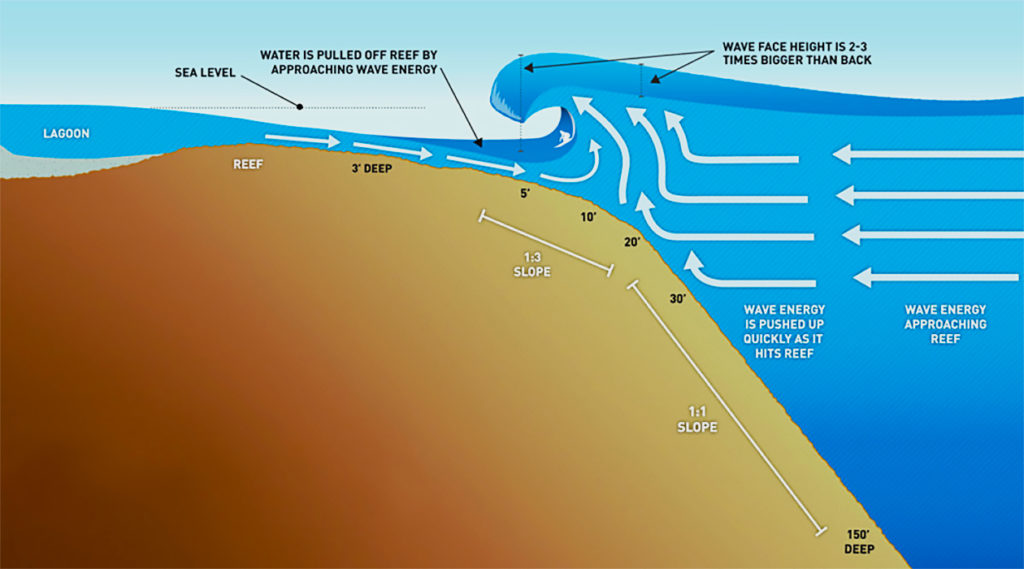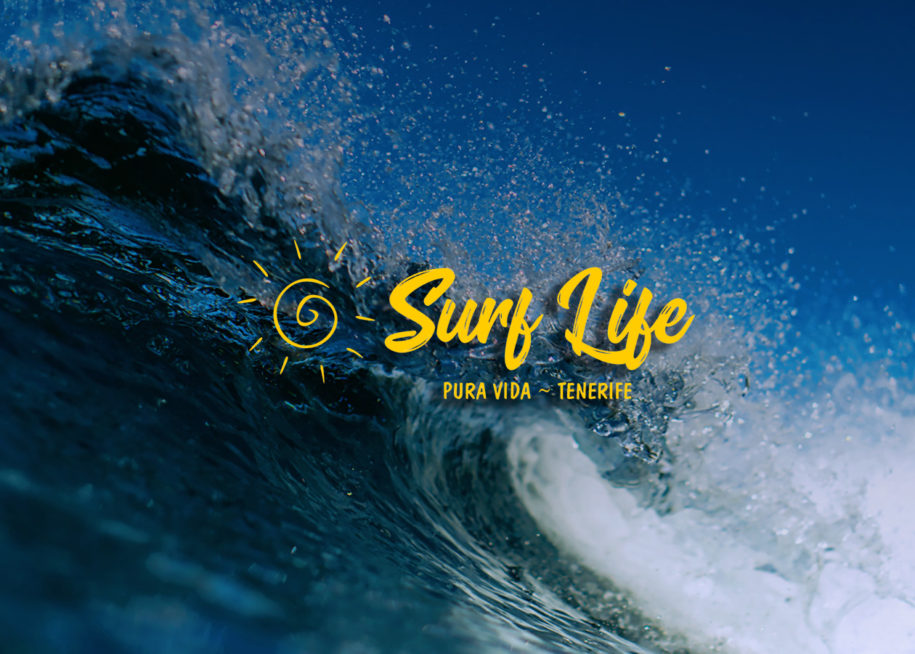Surfing waves
All day in the office, sitting at your desk, dreaming about perfect surfing waves. You hide from your boss, checking the first surfing forecast app you found on the web. From 1.5 to 1.7 meters high surfing waves are expected tomorrow. You suddenly remember you always dreamt about being an actor when you were a child. So here you go. You start coughing and tell your colleagues you feel super sick. You even set up a dramatic run to the bathroom and leave all the papers flying around on your desk (at least that was what I did!). You get what you want: Tomorrow you have a day off! Alarm at 6 o’clock, you drive all the way to the beach, sometimes pretty far from home. You arrive at first light and… tac! Surprise! Really choppy small surfing waves that have nothing to do with the forecast. My friend, surfing is an art, but surfing forecast is a science. And you definitely need to know how to read it. That’s why I am here with you today. But let’s start from the beginning.
What is a wave
You stand on a pier or on the beach, by looking at the ocean you have the impression of a wall of water moving towards your direction. Man, that’s an amazing view. But actually it is not what it looks like. Although the wave is moving towards your direction, the water is not. The wave is moving through the water, leaving the water where it is. Yes, we can be really philosophical about it. When we surf, we’re getting hitchhike from an amount of energy moving through the water. But where does this energy come from?
The most interesting factor that generates surfing rideable waves is the wind. When the wind blows on the water surface it creates small waves. So this amount of energy generated by the wind on the water will start travelling towards the direction in which the wind blows. This energy flow through the ocean is also called fetch. The longer and the stronger the wind blows, and the larger the area in which it blows, the bigger the waves will be. Here we get to define what is the swell, one of the main indicators of any surfing forecast app or website. Once this ocean swell passes through shallow water, it will be shaped into breaking surfing waves.
Now imagine yourself running and suddenly finding an obstacle. What are you gonna do? Jump over it. Well, guess now, what will the wave do when the sea bottom shoals?
As a wave moves into shallow water, it begins to slow and its height increases rapidly. The crest will start moving faster than the water below and it finally will fall forward. It basically jumps over the obstacle.
Let’s go straight to the point: it is clearly not the same if the obstacle is short or tall. Depending on the shape of the sea bottom we will have different kinds of waves:
- Spilling surfing waves: usually produced by a very gradually sloping underwater configuration. With these types of surfing waves, the energy release is pretty slow. The top of the wave basically slides down to the front and it decelerates slowly.
 Instructor Antonio practicing on a small spilling wave in the spot called Piscina in Playa de Las Américas, 100 meters walking from Surf Life Tenerife Surf School. You can see that the top of the wave is not falling indepently onto the front, but is slowly sliding and spilling.
Instructor Antonio practicing on a small spilling wave in the spot called Piscina in Playa de Las Américas, 100 meters walking from Surf Life Tenerife Surf School. You can see that the top of the wave is not falling indepently onto the front, but is slowly sliding and spilling.
Credit @Maciej Salwa
- Plunging surfing waves: they are the most spectacular wave manifestation and best surfing wave. In a plunging wave the crest breaks in front of the bottom. Some examples include the famous big waves of Teahupoo in French Polynesia, or Pipeline in Hawaii. These spots are the most looked for by those who want to go for some really big wave surfing. These types of surfing waves create the tube, or barrell, that place where each surfer would like to be. The reason of its creation a moderately steep sea bottom.
 Teahupoo is the perfect example of a plunging wave. The steepness of the reef contributes to crest formation and the really fast energy release. This really good illustration is from Surfline.com, a reliable surfing forecast website and app. In the next video, coming directly from their youtube channel, you can better understand the mechanics of the wave.
Teahupoo is the perfect example of a plunging wave. The steepness of the reef contributes to crest formation and the really fast energy release. This really good illustration is from Surfline.com, a reliable surfing forecast website and app. In the next video, coming directly from their youtube channel, you can better understand the mechanics of the wave.
- Surging waves: they occur when deep water approaches steep beaches. Despite peaking up, the wave surges onto the beach without spilling or breaking, which makes it non-surfable.
Types of breaks
So waves were all born equal, but their path ensures they won’t stay the same. As we have seen, depending on the sea bottom shape we have different kinds of surfing waves. And of course the sea bottom composition has a huge role in defining the kind of surf break. Here is a short explanation of the common types of breaks:
- Beach break: it is created by a straight sandy beach with a gentle slope, which means that the sandy seabed gets progressively shallower. This factor makes these kinds of surfing waves pretty good to start surfing, but on the other hand, they might not reach and handle the size of other kinds of breaks and they are sometimes pretty difficult to predict. Remember, sand moves. And if the sea bottom changes its shape, the wave will change accordingly!
- Reef or rocky break: those breaks are created by submarine formations like coral reefs, rock reefs or other stable structures in shallow water areas. We might be able to find a reef break close to the shore or pretty far from it, as in the case of the big waves surfing spot called Jaws, in Hawaii. The surfing wave coming out of a reef break is usually very predictable. Once you understand how the spot works, it is also easy to identify the “channel”, that part of the area where the water is deeper and where the wave does not break. Surfers uses channels in order to get back to the line up – where you sit and wait for the waves to come – in an easy way, without having to paddle through the waves coming in.
- Pointbreaks: those surf breaks are created when a point of land or rocks extends outside the coastline. For this reason, the wave generated usually breaks either to the left or to the right. Point breaks usually offer extremely long waves to surf. Around the world, the most famous ones are Jeffrey’s bay in South Africa and Rincon in California. A few meters walking from our surf school in Playa de Las Americas we can find La Derecha del Conquistador and La Derecha de Salinas, both of them creating a really long right-hander surfing wave.
- Rivermouth break: deposits that build up at the mouths of rivers or streams can also create good surfing waves. The famous wave of Mundaka in Spain is an example. It must be said that the water quality might not be at its top in those surf breaks.
So far, the biggest surfing wave ever ridden was recorded in Nazaré, Praia do Norte, in Portugal. This spot presents a particular underwater canyon that in January 2018 generated a surfing wave reported up to 35 meters high.
Watch this video in order to have an insight into this wave’s origin.
Among all the big waves riders who were surfing the largest waves in the world, Garrett McNamara is the one who was first recorded on the biggest surfing wave in Nazaré in 2013. The possible height of the wave was estimated to be 95 ft (29 meters).
Don’t miss the next article if you want to know how to read the surf forecast depending on wind, tide and swell conditions.
Antonio
Founder and surf instructor of Surf Life Tenerife


7 Comments
Pablo
Really interesting and detailed for those who are starting and dont know how the phenomena is. Thank you for your patience!
Alejandro Hidalgo Angulo
Beautifully explained!! Some facts that every good surfer should know. Thank you Antonio for this great contribution.
Pedro
Antonio, thank you very much for the post.
I assumed that the kind of waves just depended on the wind. But I see there are more elements involved.
It is a really fascinating topic and this article explains it in an easy and beauty way.
I am looking forward to the next article about the mysteries of reading the surf forecast.
https://waterfallmagazine.com/
https://waterfallmagazine.com
Admiring the time and effort you put into your website and detailed information you
present. It’s good to come across a blog every once in a while that
isn’t the same outdated rehashed information. Fantastic read!
I’ve saved your site and I’m adding your RSS feeds to my Google account.
wp_8734250
Thanks a lot for following us!! 🙂 We’ll soon get back with new contents!
Bradley
Your style is really unique in comparison to other people I
have read stuff from. Thank you for posting when you have
the opportunity, Guess I’ll just book mark this web site.
wp_8734250
Thanks Bradley 🙂 I’m happy you like our website!